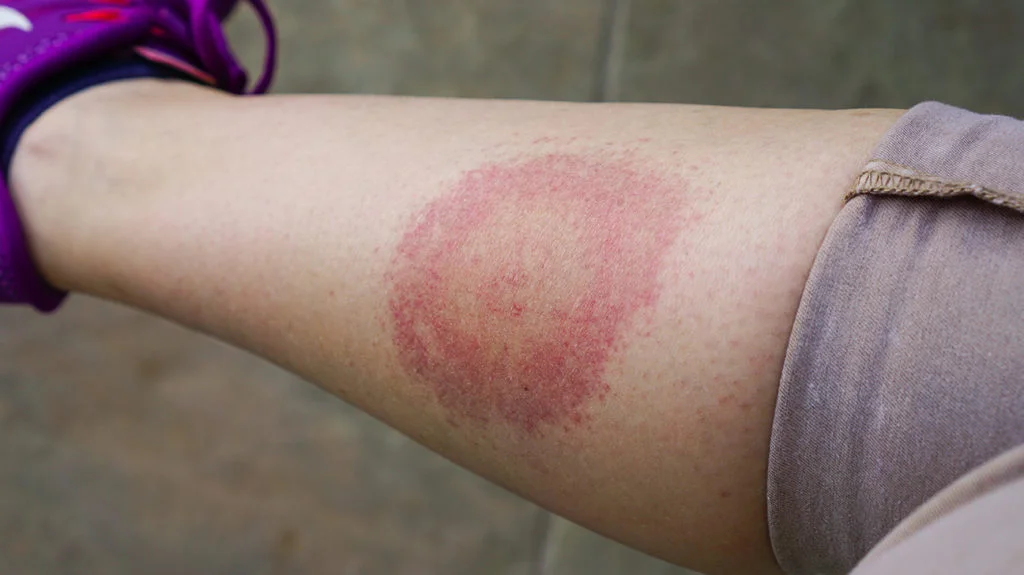Description

Copyright infringement not intended
Picture Courtesy: https://www.medicalnewstoday.com/articles/lyme-disease-symptoms-progression-and-when-to-see-a-doctor
Context: Kerala has reported its first confirmed case of Lyme disease, a tick-borne bacterial infection, which if left untreated, can cause a range of health problems, potentially affecting the nervous system, heart, and joints.
About Lyme Disease
- Lyme disease, commonly known as Lyme borreliosis, is caused by Borrelia bacteria that are transmitted to people by the bites of infected ticks of the genus Ixodes.
- The most common first symptom is a growing red rash called erythema migrans (EM) at the site of the tick bite. Other early signs may include fever, headaches, fatigue, and muscle or joint pain.
- Lyme disease, if left untreated, can cause neurological consequences like facial paralysis.
- Lyme disease is endemic all over the Northern Hemisphere, with infections peaking in the spring and early summer.
- The diagnosis is made using a combination of symptoms, a history of tick contact, and blood tests for particular antibodies. However, during the early stages of the condition, blood testing may provide false-negative results.
- Wearing protective clothes, utilising picaridin-based insect repellents, and applying insecticides to reduce tick populations are all examples of prevention techniques. Quick removal of connected ticks with tweezers can help prevent transmission.
- Prophylactic antibiotics may be explored if a tick is removed immediately and is engorged with blood, but they are not normally suggested.
- Antibiotics like doxycycline, amoxicillin, and cefuroxime are beneficial in treating Lyme disease.
- Standard treatment typically lasts two to three weeks; however, some people may have lasting symptoms.
- There is currently no human Lyme disease vaccine available. LYMERix, a previously developed vaccine, was discontinued in 2002 due to insufficient demand. However, vaccinations to prevent Lyme disease in dogs are available.

|
PRACTICE QUESTION
Q. Which of the following are the root causes of Lyme disease?
A) A virus
B) A fungus
C) Bacteria
D) A parasite
Answer: C
|











